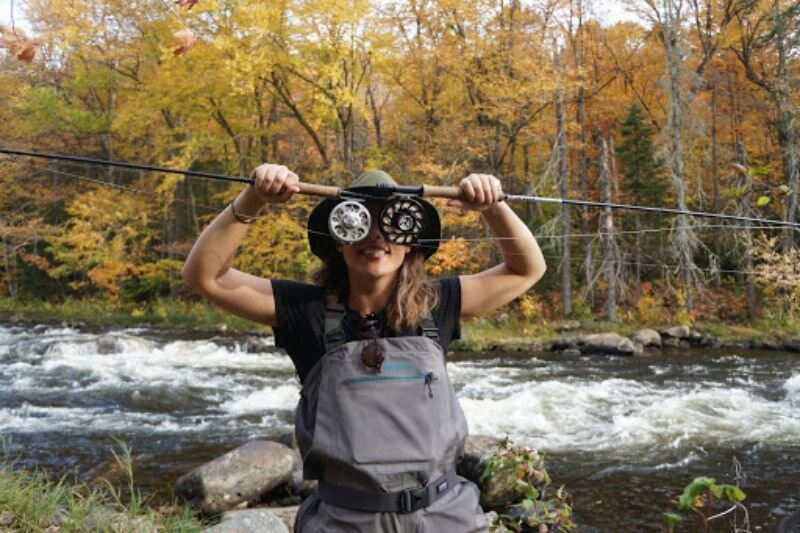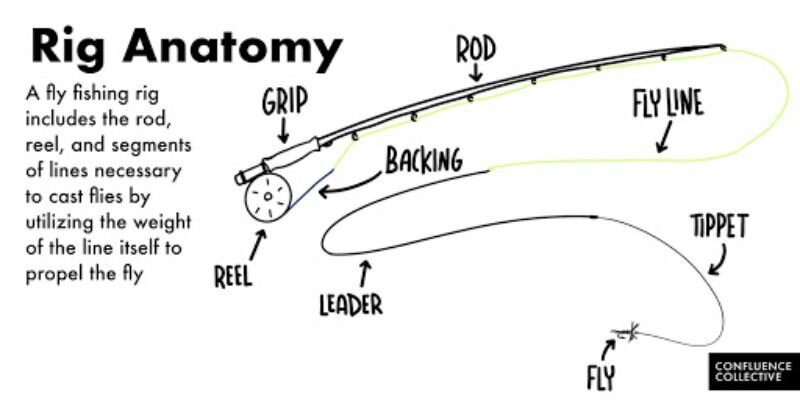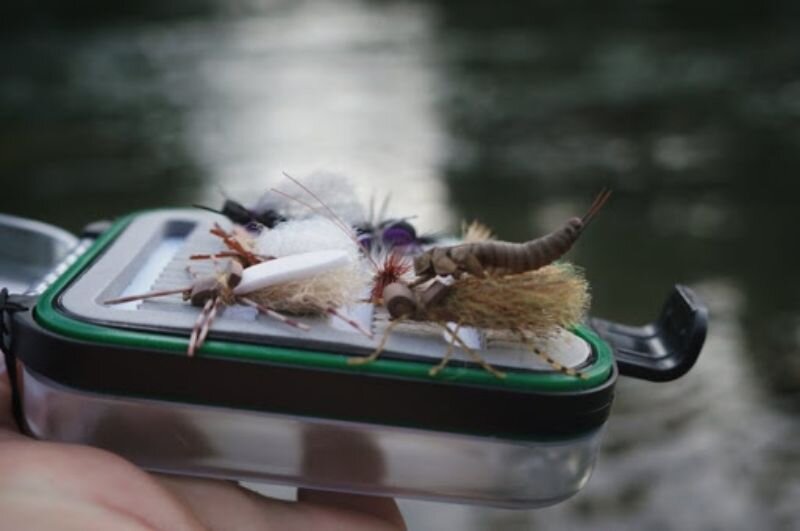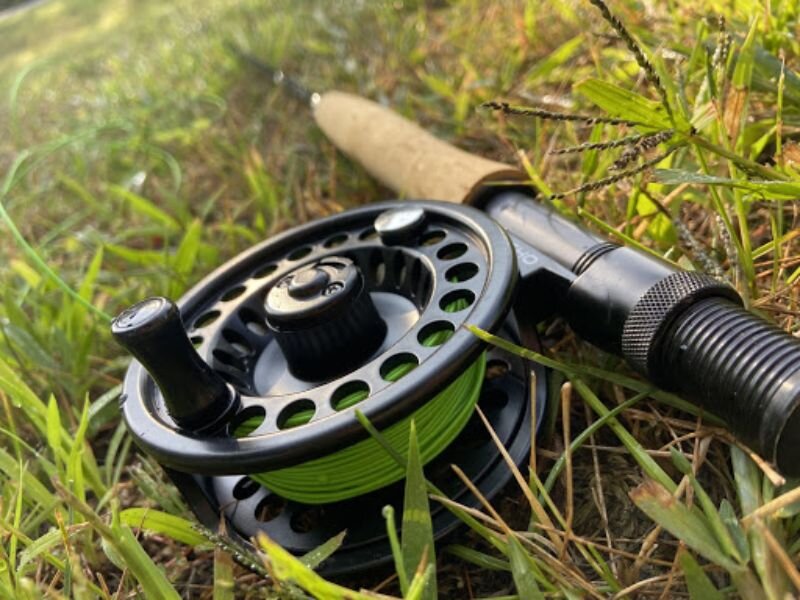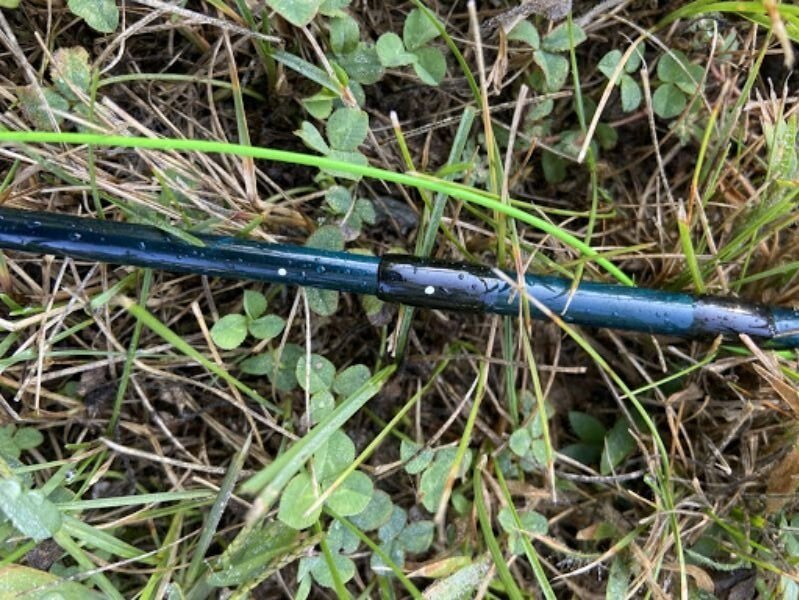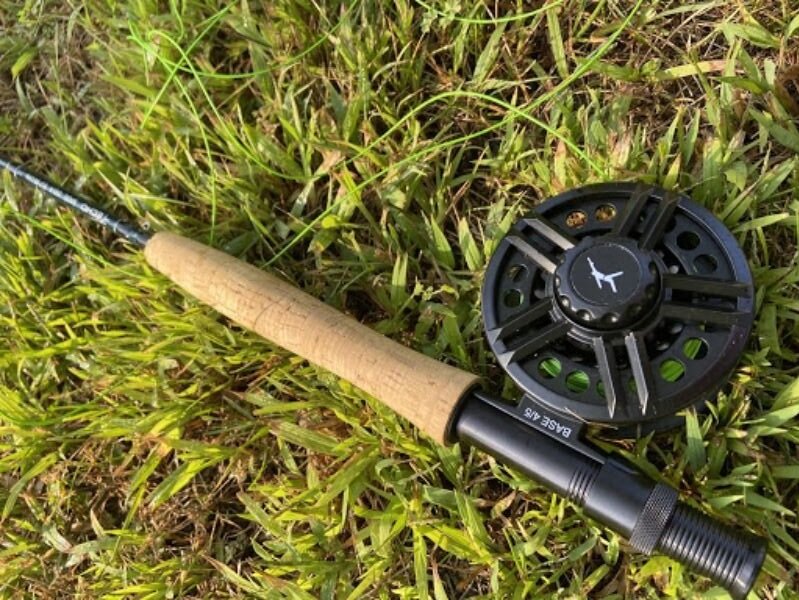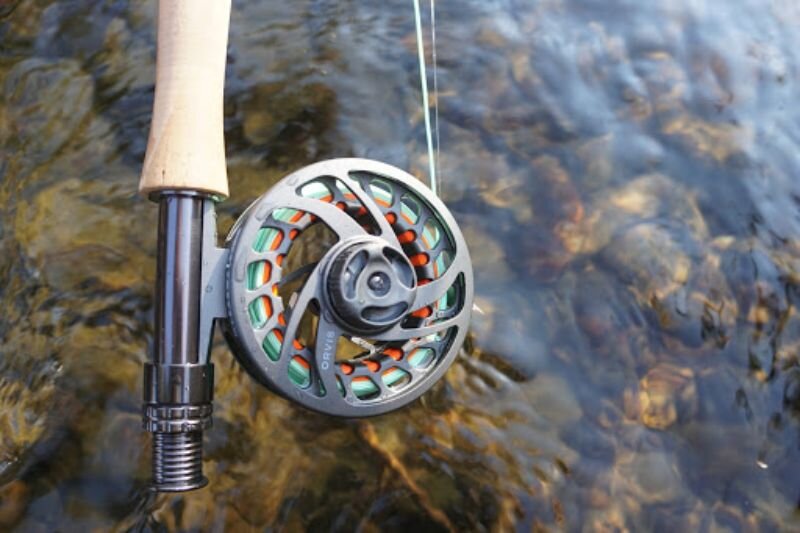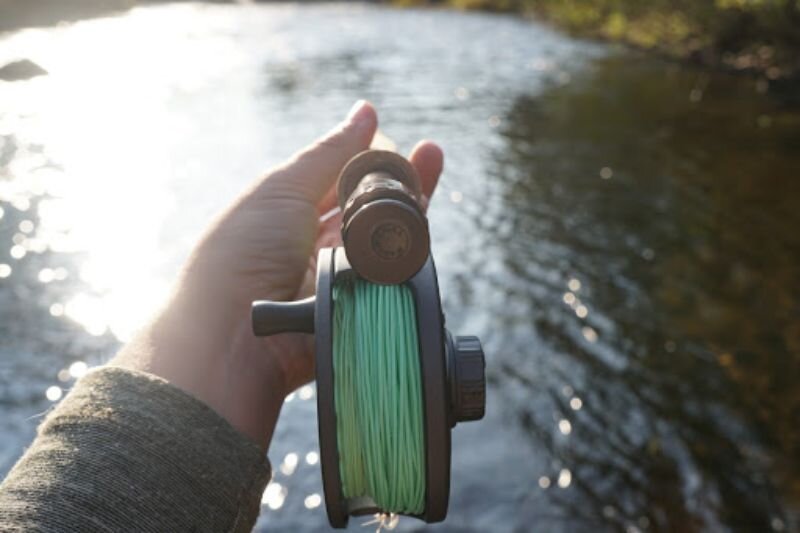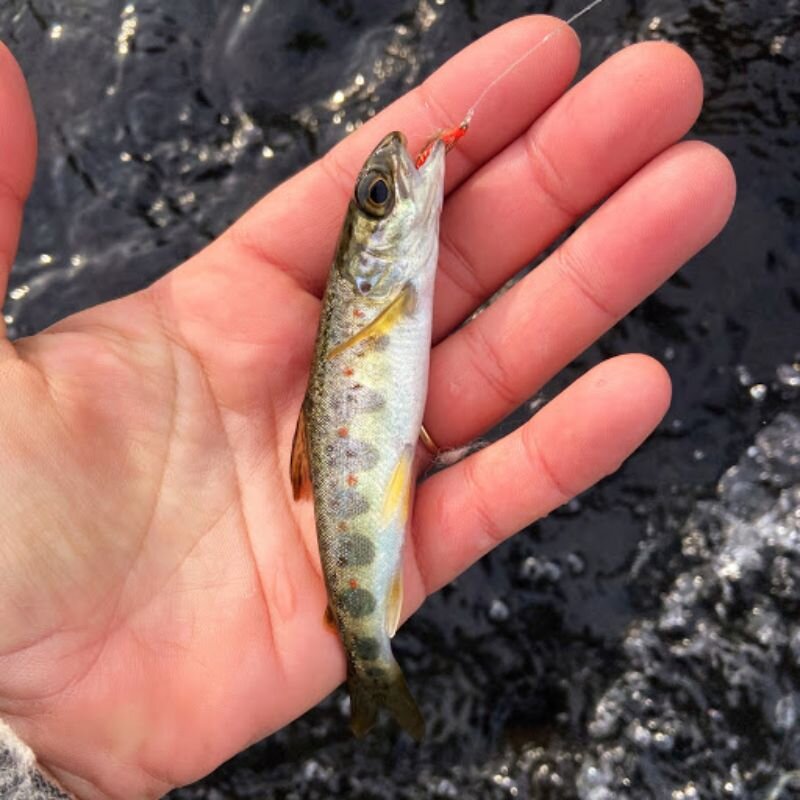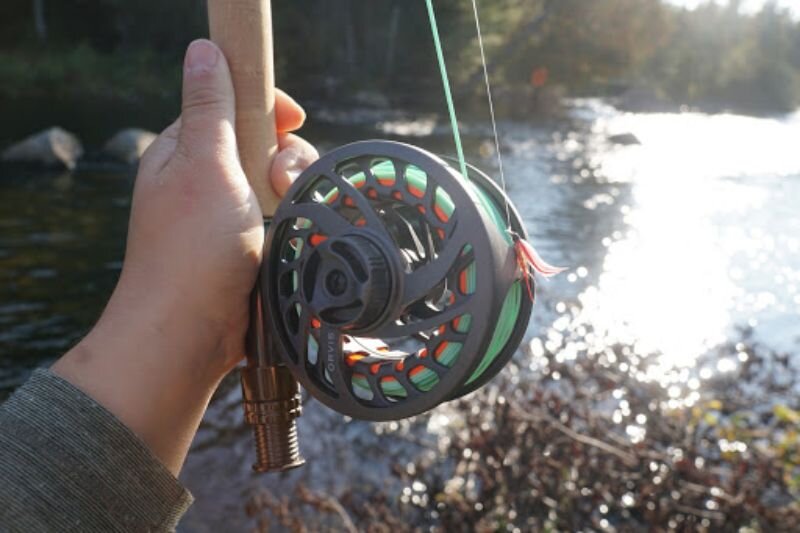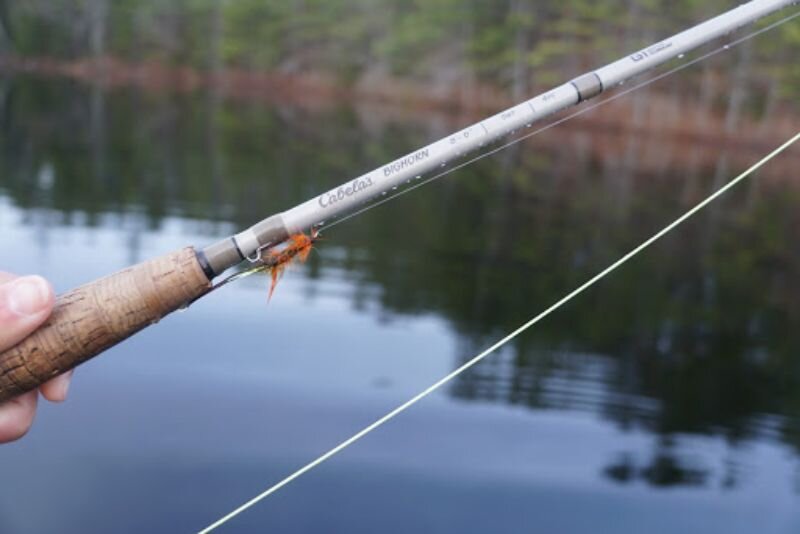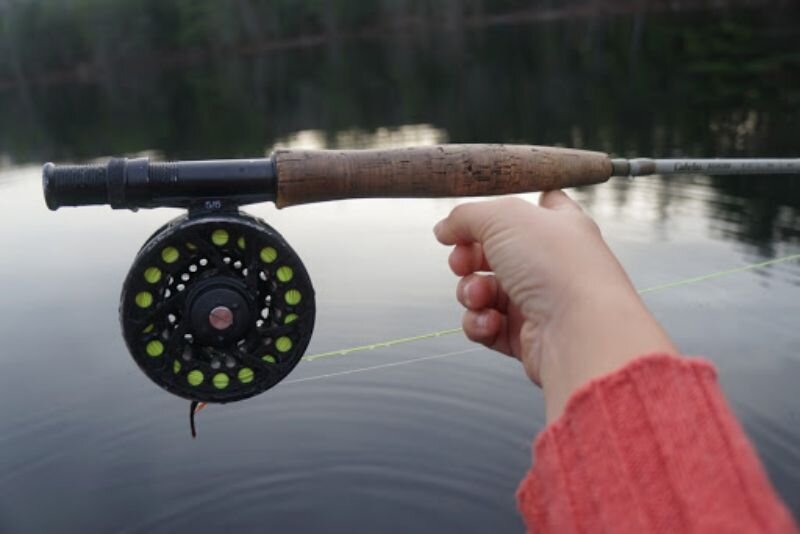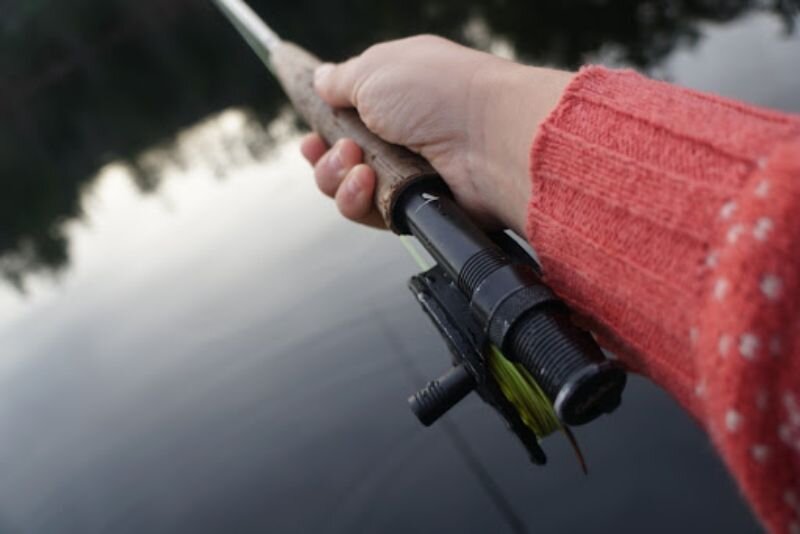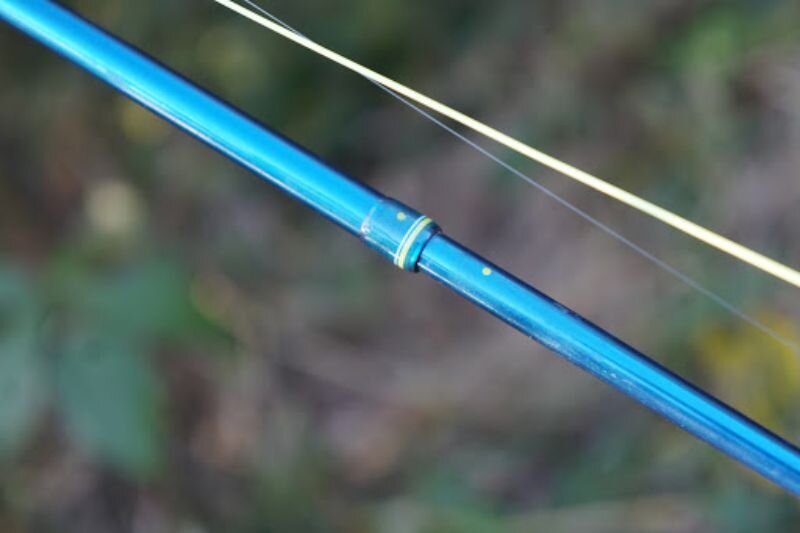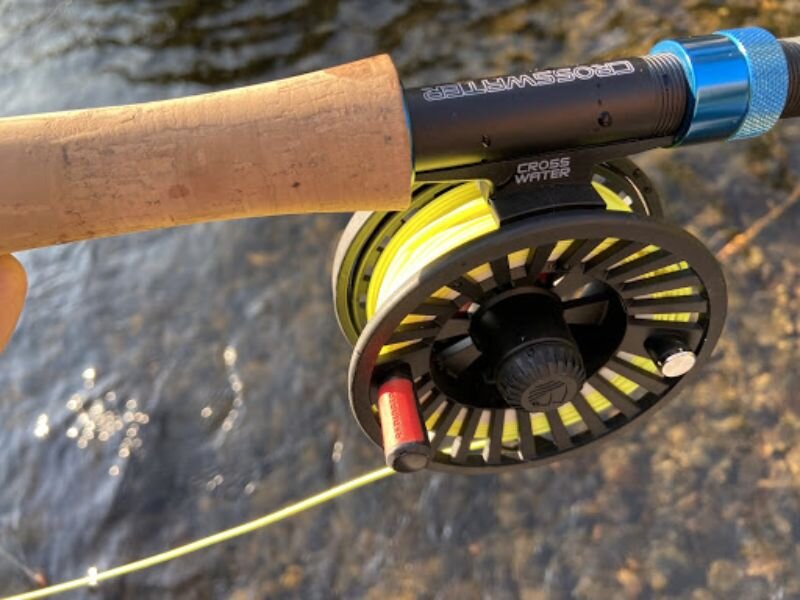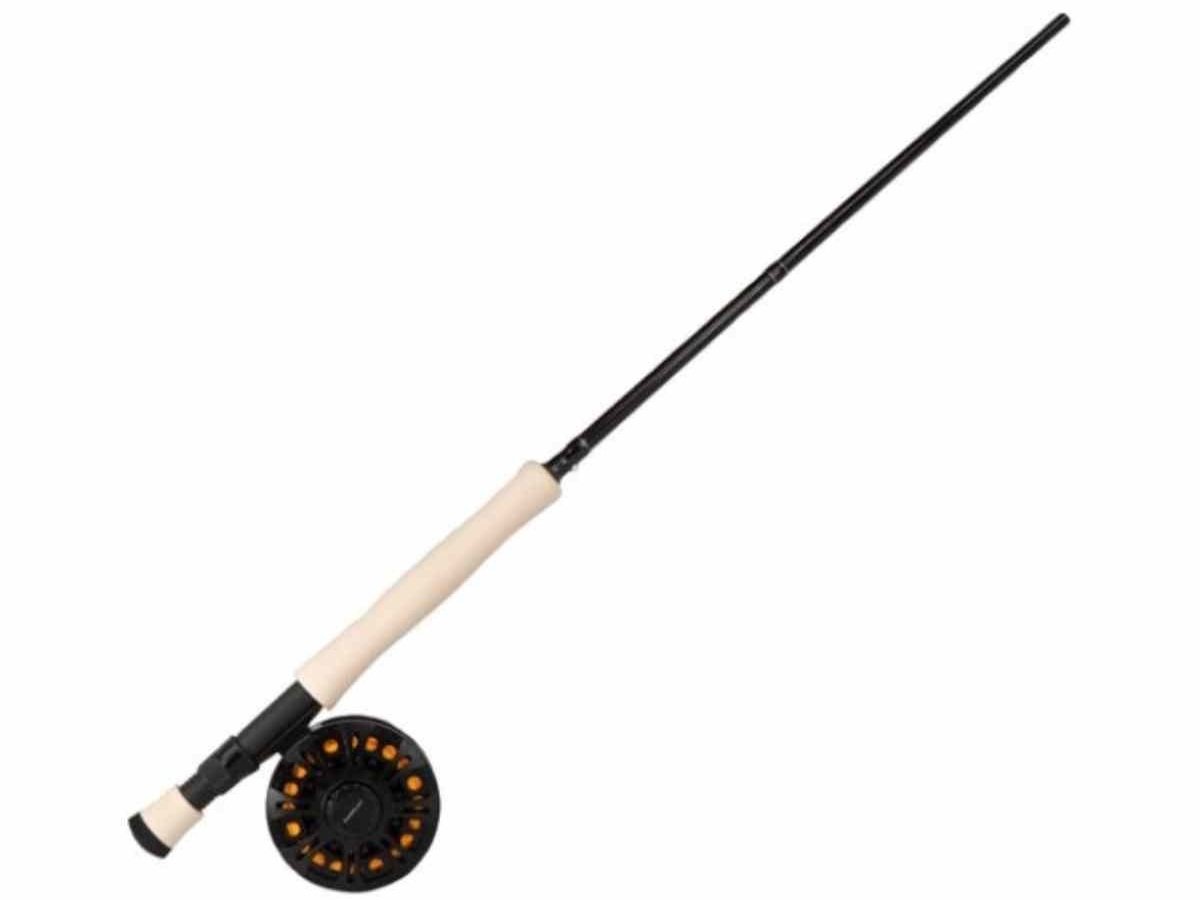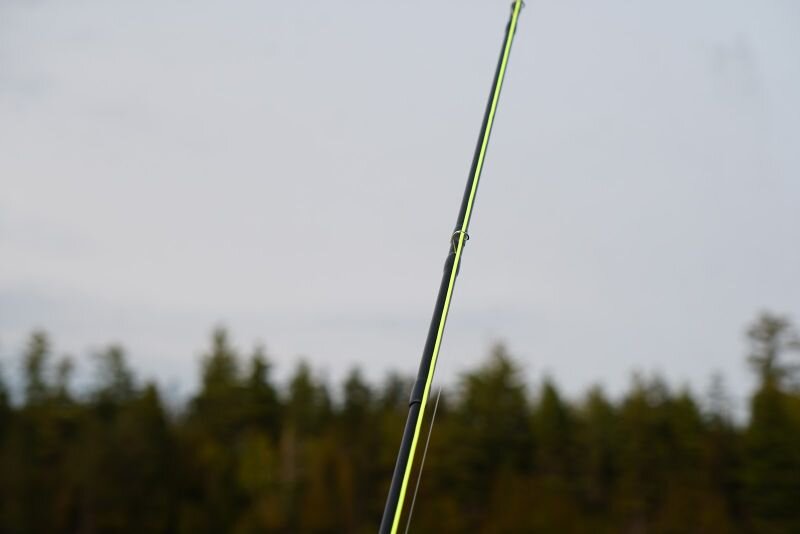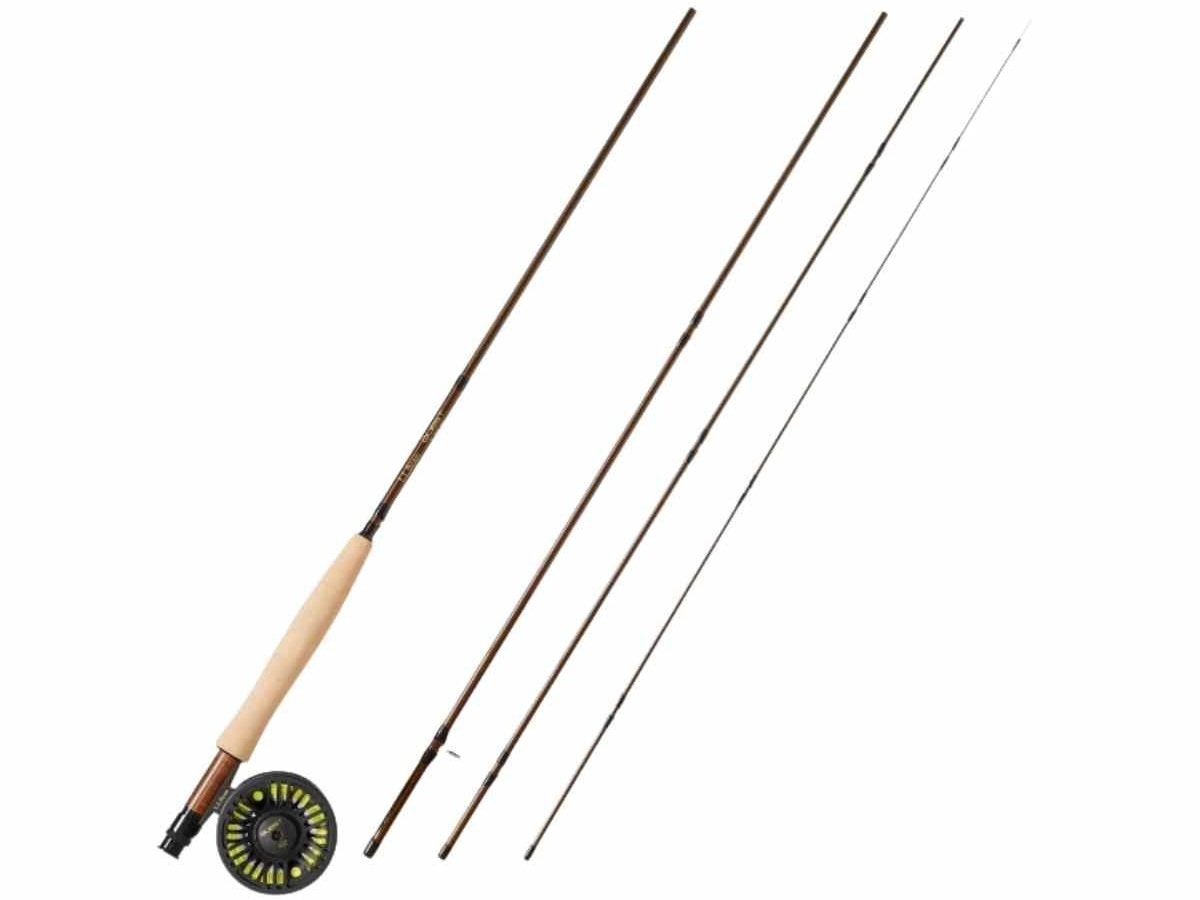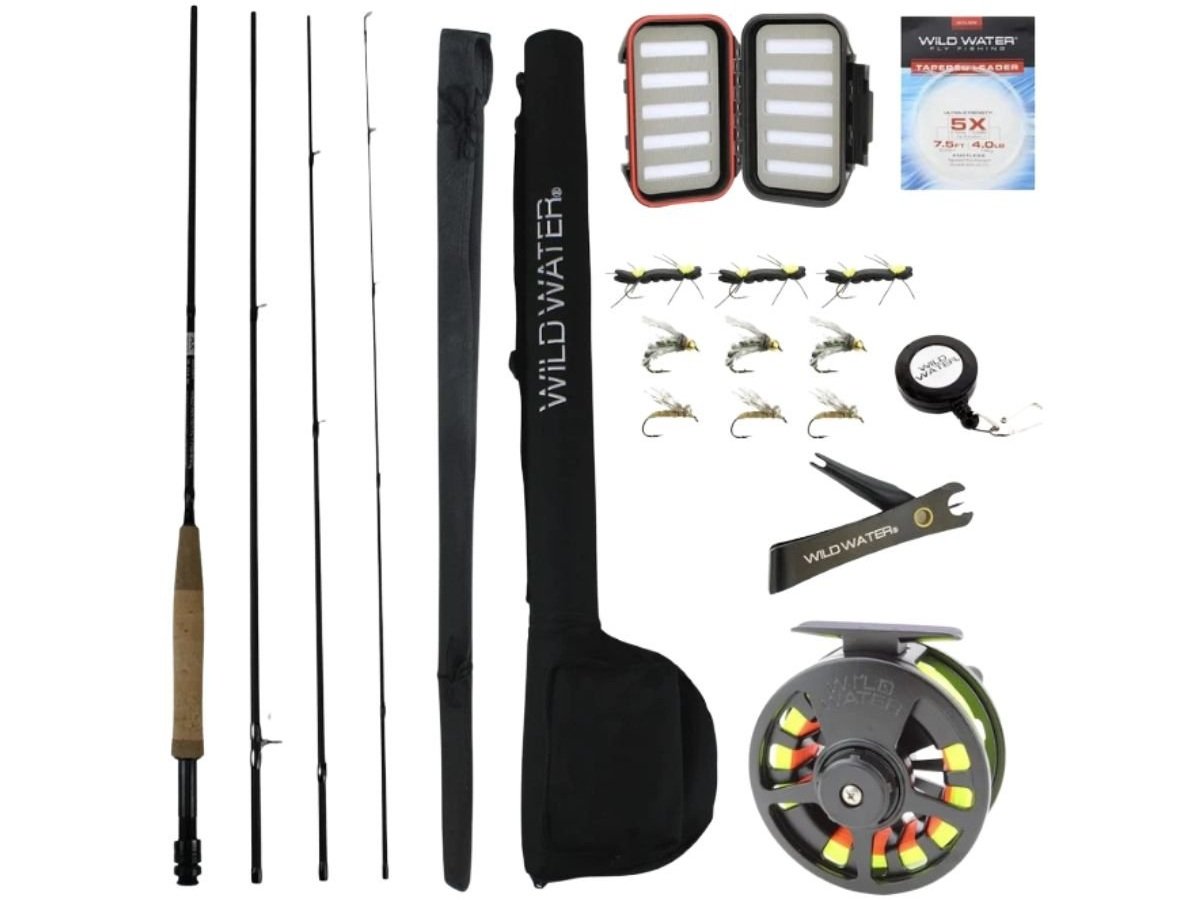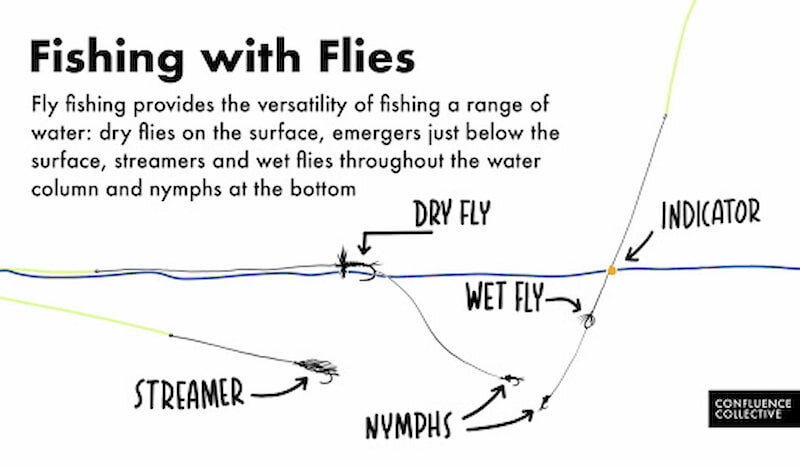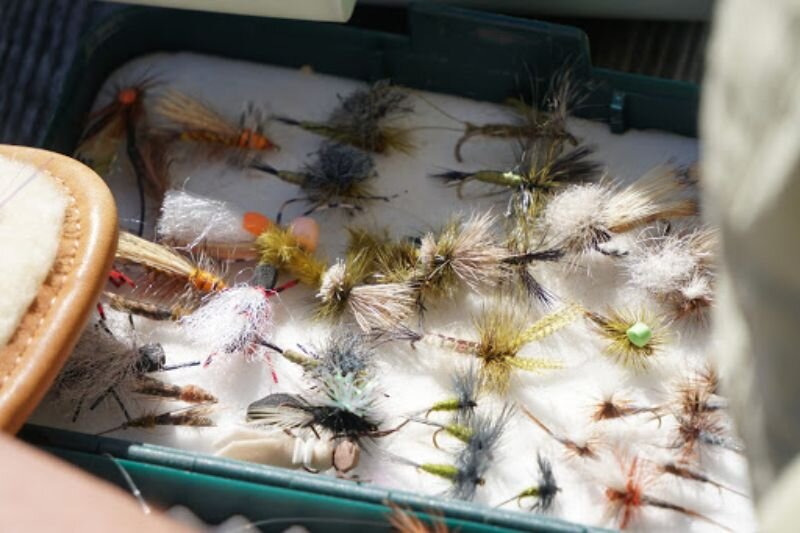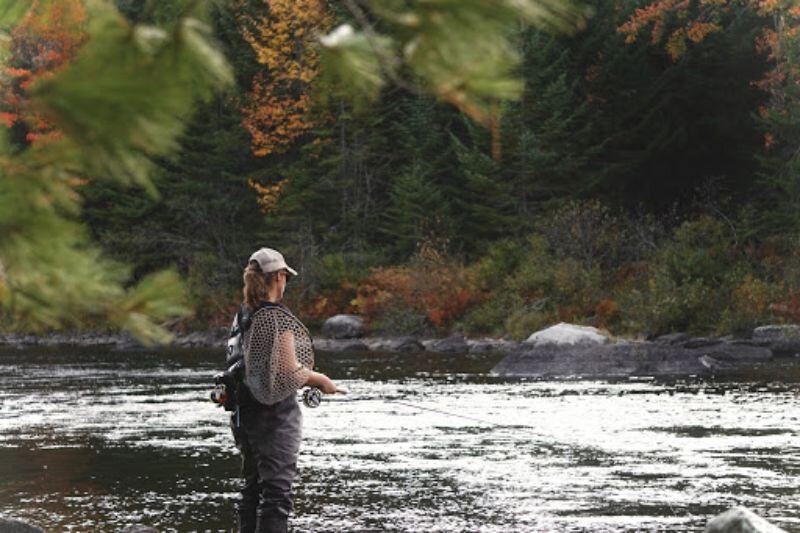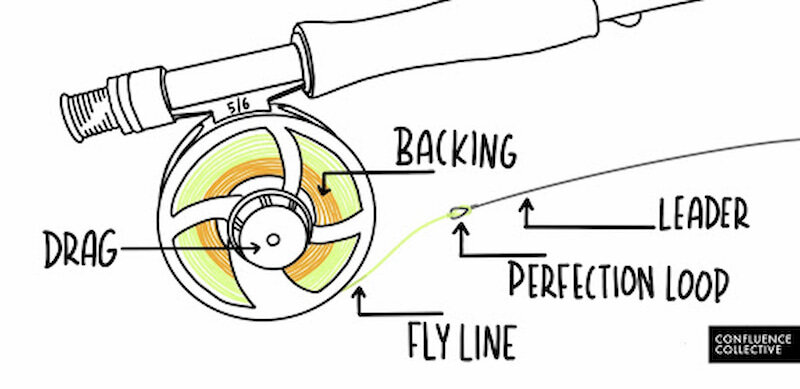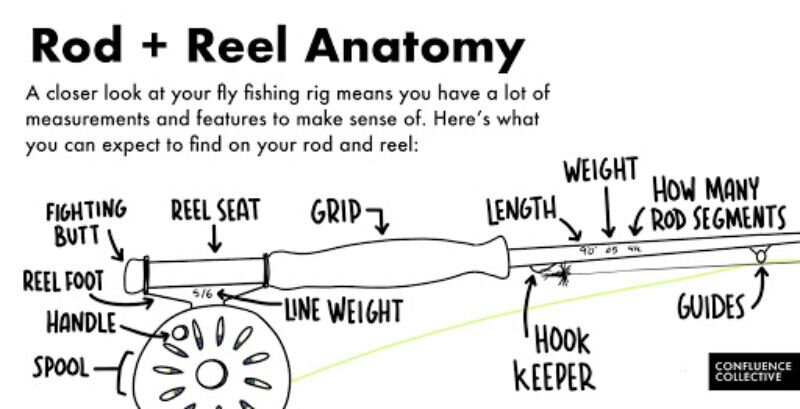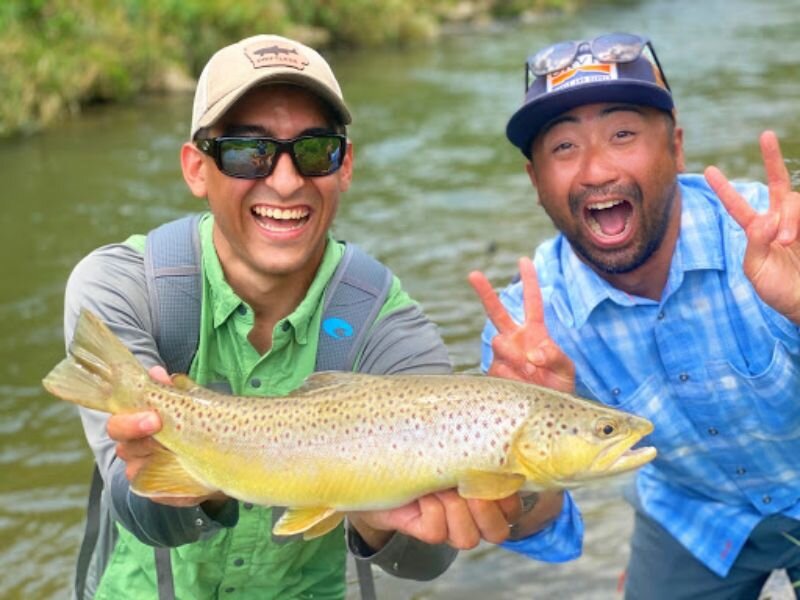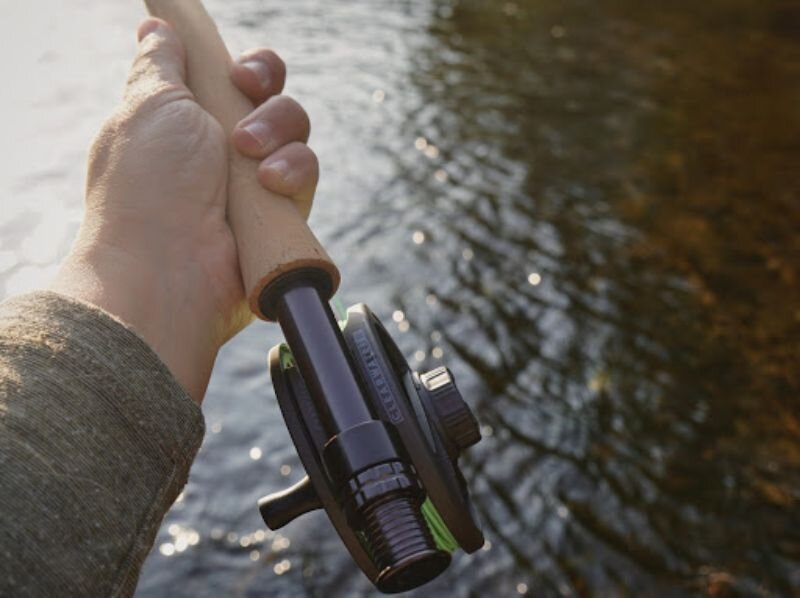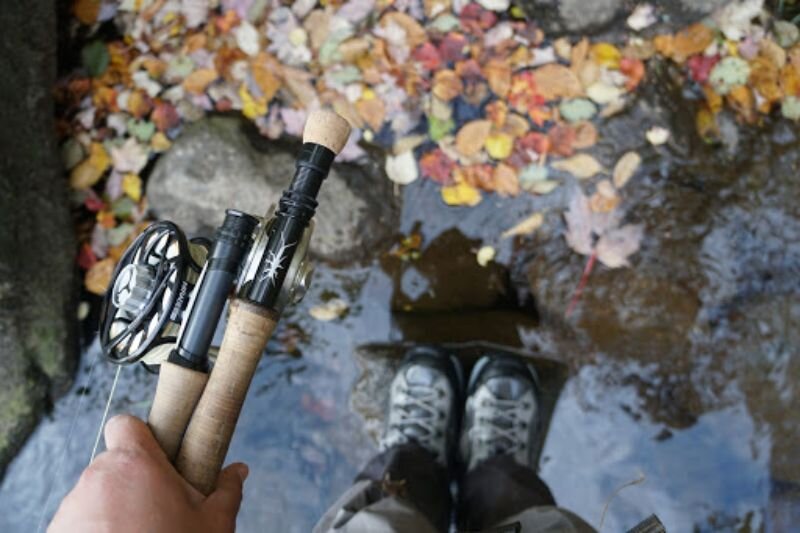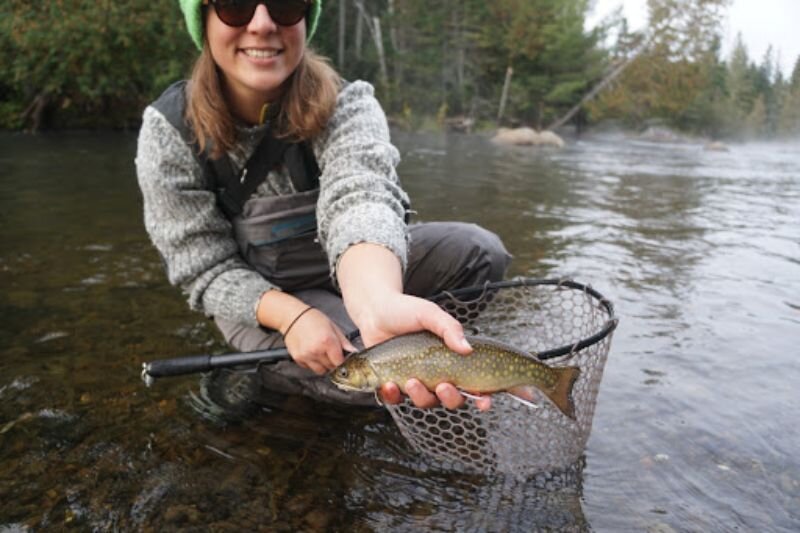Best Beginner Fly Fishing Combos for 2024
The Top Fly Rod, Fly Line and Reel Combos For New Anglers
April 18th, 2024
Home > Gear Reviews > Water
Over the last couple of years, fly fishing has grown exponentially, but there is a lot to understand before going all-in on a new setup. This gear guide breaks down the best fly fishing combos — fly rod, reel and line — for new anglers.
Whether you’ve never cast a line, are looking for your first rig, or want to upgrade your current combo, we’ve done the research and field testing to steer you in the right direction. Looking at weight, action and length, we chose our top all-around, budget, and upgrade picks, and compiled a list of contenders worth looking at. We also break down rig anatomy, demystify fly fishing, and talk about other gear to consider adding to your new kit. With this initial know-how and your new rod in hand, you’ll be ready to gear up and hit the water.
Related: What equipment do I need for Fly Fishing?
Read more: Best Fly Fishing Wading Shoes
We create reader-supported, objective gear reviews independently selected by our editors. This story may contain affiliate links, which help fund our website. When you click on the links to purchase gear, we may get a commission, without costing you an extra cent. Thank you for supporting our work and mission of outdoor coverage for every body! Learn more.
Comparison Table
| FLY FISHING COMBO | TREELINE AWARD | MSRP* | ACTION | WARRANTY | WHAT'S INCLUDED? |
|---|---|---|---|---|---|
| Echo Base Lift Kit | Best Overall Read why |
$180-190 | Firm, medium-fast | Lifetime rod/1 year reel | Rod, reel, line, leader, backing, case |
| Orvis Clearwater Outfit | Best Upgrade Read why |
$419 | Medium, smooth, balanced | 25 years | Rod, reel, line, backing, backing, tube |
| Cabela’s White River Fly Shop Bighorn Fly Outfit | Best Budget Read why |
$100 | Medium | 1 year | Rod, reel, line, leader, backing |
| Redington Crosswater Combo | Most Versatile Read why |
$190 | Fast-Medium | 1 year | Rod, reel, line, case |
*We note any discounts we see on our Deals page, which is updated daily.
What is a fly fishing combo? What type of water can I use this rig?
A beginner fly fishing combo should be good to learn with, push yourself with, and work in a variety of settings as you explore what you like best about being on the water. It shouldn’t limit your options and should allow you to test out different techniques. In a very basic sense, your fly fishing combo should consist of a rod, fly line, and a reel for the line, leaving you with just flies to purchase before getting out. Seems simple, right?
Flies, the typical fishing lures in fly fishing, are made of feathers, fur, thread, and other materials tied together on a hook to mimic anything from a tiny hatching bug to baitfish swimming in a current. Here you see flies mimicking a large bug, alongside the actual exoskeleton of the species! Photo courtesy Bri Dorstie.
If you’ve searched for the basic gear of fly fishing rod, reel, and line, you’ve probably been bombarded with a bunch of numbers and specifications that make no sense. Does weight (wt) tell me how heavy a fishing rod is, or how heavy a fish I can land? Perhaps a little bit of both? And why does my fly line say “weight forward”? Does it matter if my line is orange, green, or yellow?
But don’t panic! Fly fishing gear is incredibly specialized by intended use. Since there are thousands of species of fish and likewise thousands of places you can fish for them, manufacturers have tailored their features to meet as many individual needs as possible. But we’re here to tell you: it doesn’t have to be complicated to start.
The Winners
Let’s talk options! We have four main recommendations for you:
The Upgrade for anglers with a little more to spend on something they can grow into
The Multipurpose for anglers going to different kinds of water
We’re also including a shortlist of additional contenders you may want to consider.
Within this review, we’ll compare models to each other, share insight from field testing, summarize other reviews and write-ups, and point out key differentiation between each featured fly fishing combo.
Knowing all models reviewed here fall within the 9’, 4-5wt range with medium/fast action, and the expectation of pre-spooled reel with backing and fly line at the very minimum, our top contenders also include a rod tube for traveling and storage, and most come with a leader to further minimize your purchases before actually fishing.
The Echo Base kit feels fancier than its price tag suggests. It includes a cork grip and a resin (rather than plastic) reel and reel seat. The Base is pictured here during field testing in Maine. Photo courtesy Bri Dorstie.
What we liked: durable rig with a lifetime warranty, versatility, beginner-friendly, easy set-up, accurate casting, enough sensitivity to learn loading line, reasonable price, alignment dots make setting up segmented rod easy for beginners, comes with a leader so you can get on the water immediately, anodized aluminum detail keeps form even if you leave the reel on after fishing or other common beginner maintenance issues
What we didn’t like: accuracy tends to lessen as casts get longer
The Echo Base Lift model is one that ticks nearly every box: its affordable, versatile, straightforward design has been showered with accolades from anglers and guides around the country. We spoke with shop owners and guides catering to beginners, and from New York to Montana, from California to even Iowa, the Echo Base was always in the beginner all-star lineup. Chances are if you’re new to fishing and getting out on the water with either a stop into a local fly shop for the skinny or a guide to show you the ropes, they’ll have an Echo waiting for you.
The Echo Base Lift fly rod combo encourages you to pay attention to mechanics and produces results that keep you motivated. It’s accurate to cast, boasting firm medium-fast action paired with a softer rod tip that gives you enough sensitivity to tune into the concept of loading line (the process of moving the line through your rod by casting). While accuracy tends to lessen as casts get longer, the versatility of this rod in small and large waters is enough to keep it useful, especially as 70ft casts should be few and far between.
Compare Prices Of The Echo Base Kit
A simple touch that makes a big difference: alignment guides! These tiny dots help you line up your rod segments exactly, rather than feeling a way about looking down the eyelets a dozen times as you set up your gear. Set up that rig with confidence! Photo courtesy Bri Dorstie.
Distance
Still, when testing the Echo Base Lift for distance, I was surprised by just how powerful it felt. It’s capable of hitting long-range targets as well as those at close range. Furthermore, in comparison to intro models from manufacturers like Cabela’s and Cortland, the combination of decent rod and line made for a very natural feel when casting a line out.
Add in common-sense details like alignment dots that guide those just learning to set up a segmented rod, and you’ll feel like a more confident angler from the start.
Durability and warranty
The Echo Base Lift is also designed with beginners in mind in terms of durability. It features a tough graphite rod that feels like it will withstand messy casting and exuberant catches, and the rod itself comes with a lifetime warranty.
That’s worth repeating: a lifetime warranty is difficult to find on beginner rigs, and since your first rod will likely get the hardest use, it’s worth prioritizing.
Likewise, the Echo Base Lift’s reel feels durable, where the reels on some beginner rigs seem like they’re built to fall apart. It comes with a straightforward drag function with enough resistance for fighting bigger fish or stronger currents—and while it may not be good for a lifetime, the reel is backed by a 12-month warranty.
Ease of use
With a reel made from a unique resin that appears to be metal, a rod that comes in a pleasing blue color and a cork grip that fits a wide range of hand sizes, the Echo Base Lift ages nicely even as your gear collection grows—and comes in at the right price without screaming “I’m cheap!”. Considering some of my first casting experiences on the LL Bean’s Double L, where long days casting left me with blisters, the Echo Base Lift feels like it makes sense in your hand and will last as long as you do on a day of fishing.
As a smaller female angler, some rods are clearly designed by and for those with massive hands—but the Echo Base grip doesn’t leave me feeling like a tiny-handed kid. My partner with much larger hands also didn’t feel like a giant. It’s honestly comfortable and matches the cork of much fancier (and more expensive) rods. Photo courtesy Bri Dorstie.
Features and design
Additional affirming design details abound. The reel seat and smooth tightening features don’t feel like something you need to pay attention to in a new rod purchase, but after experiencing the less durable plastic mechanism on the Cortland FairPlay or the bamboo reel seats that expand with water, you start to appreciate the straightforward durability found in the Echo.
As a beginner, your gear maintenance habits are still being established. It’s nice to know this anodized aluminum detail will keep its form even if you leave the reel on after fishing or other common beginner maintenance issues.
The chrome line guards and hook keeper feel sturdy for being thin metal features, and the uniform finish of each glossy rod section speaks to a level of care in creating something for beginners not often seen in other low-cost options.
What's included
The Echo Base is a logical buy that comes with a protective case, a built-in rod sleeve, a reel already spooled up with a weight-forward floating line and backing, and even a leader to tie your first fly on.
Weights and other options
Even better: the Base has a wide range of weights available at entry-level pricing. While we tested and recommend 4-5wt models for their versatility in as wide a range of waters as possible, the Base comes in weights that can actually accommodate both the tiny creek fish best suited to the 4wt or the chunky salmon who’ll put an 8wt to work. Adorable bonus: the Echo Gecko model is great for kids if you need to outfit the family.
Updates to the most recent model
For 2024, the Echo Base Lift is in stock and widely available—a first for a few years given the popularity of fly fishing during the pandemic. We purchased and compared the updated Base Lift compared to the extremely popular old Base series. Echo says they updated actions to suit a wider range of casting styles. As far as we can tell, it’s feels and is constructed very similarly. Best yet, the newest model remains at the same price.
Which Echo Base Lift to get
For beginners, we recommend 4 to 5wt, 8’9” to 9’ft length, which allows versatility on many kinds of water.
The Best Upgrade Fly Fishing Combo:
Orvis Clearwater
The Orvis Clearwater is an upgrade worth the extra buck if you can manage it. This beginner setup comes with a superior quality floating line as well as backing spooled onto the best beginner kit reel we had in hand. The Clearwater will remain relevant in your gear closet beyond your first season on the water. Photo courtesy Bri Dorstie.
What we liked: most technical and best-engineered options that are still beginner friendly, a rod you can grow into as a beginner and keep for life, balance, aesthetics, durability, versatility, fly line upgrade, quality reel, 25-year warranty
What we didn’t like: price, we wish there was a hook keeper included in this kit
If you have the budget, do yourself a favor and upgrade to the Orvis beginner kit series, the Orvis Clearwater rig. Orvis has some of the most technical and best-engineered gear options, and the Clearwater model we tested made that apparent. While Orvis makes another slightly less expensive beginner outfit, the Encounter (see more below), between the two, we chose the Clearwater as our Upgrade winner for its balance, aesthetics, durability, versatility, fly line upgrade, better quality reel, and extended 25-year warranty.
The overall look of the Clearwater makes you feel like you’ve got what you need to take on river giants: the reel is a definite upgrade from its resin counterparts on the Echo Base (review above) and Redington Crosswater (review below). The Orvis Clearwater comes ready to travel in the best rod tube we saw in a beginner kit. You won’t have to give a second thought to where this ends up in your wider gear stash; the Clearwater is ready for rough transport, whether it’s loaded into a truck bed or thrown around by handsy airport security.
Compare Prices Of The Orvis Clearwater
The Orvis Clearwater is a step above the Orvis Encounter, and comes with a better warranty and reel. A big bonus for both Orvis setups: their standard floating line casts beautifully and maintains superior sensitivity when compared to other beginner kits. Photo courtesy Bri Dorstie.
Balance
A setup like the Clearwater isn’t just about aesthetics and durability, however: it’s also about balance. Using the Clearwater, we caught everything from 20+ inch salmon to tiny parr, which is an impressive feat. A beginner rig that’s sensitive enough to clue you into a fish that’s a scant four inches long AND can handle their larger cousins is handy for your first few times out on the water when you don’t quite know what’s waiting for you under the surface.
The Clearwater is ideally balanced, making it ergonomically pleasing for long casting days. A well-balanced set up limits the aches and pains beginner technique can often cause for your wrist and arm. How do you know if a rig is well-balanced? Hold your rod at the grip very gently in your hand, and see if it tilts backward or forwards. A big tilt in one direction lets you know ahead of time if you’ll be feeling it later or fighting your equipment rather than focusing on form. Photo courtesy Bri Dorstie.
Included Fly line
Another big benefit of the Clearwater is the fly line upgrade. When casting, the included fly line on the Clearwater shot out of this rod more smoothly and with more precision than the line on our other winners including the Cabela’s Bighorn, Redington Crosswater, Echo Base, as well as other beginner setups that didn’t make the cut.
The smallest catch of our field testing was made with the Orvis Clearwater, swinging wet flies. This is a testament to the level of sensitivity you get in this beginner kit: it keeps the angler in tune with even the smallest and most delicate of catches — and makes the bigger fish all the more fun to fight. Photo courtesy Bri Dorstie.
Orvis Clearwater vs. Orvis Encounter
The Clearwater is a step up from the Orvis Encounter (review below).. The Clearwater comes with thoughtful touches like a quality cork grip, smooth metal reel seat, and intuitive rod construction in addition to an expanded 25-year warranty.
Hook keeper
While it’s a small detail to pick on, we wish there was a hook keeper included in this kit. There are other options for managing your flies, like sticking them into the cork grip or nestling them into the reel, but when we trekked miles through brush and undergrowth on our way to a fishing spot, the hook on our Clearwater snagged on saplings or tree branches quite a few times. This happens sometimes even when you have a hook keeper, but our other rigs didn’t stop us as frequently as the Clearwater. One simple solution: wait to set up your rod until you get to your fishing spot, and walk through heavier undergrowth with your rod tube stuffed into your pack.
One qualm: why no hook keeper? This is something we’ve noticed about most Orvis setups, but thankfully the included reel on the Clearwater offers a number of nooks and crannies to manage your hook. Photo courtesy Bri Dorstie.
Value
The Clearwater comes is towards the top of our budget for this review. While its cousin, the Encounter, comes in about $30 less, we still recommend the Clearwater instead. Given the Clearwater’s extended warranty and better quality reel—you might as well if you’re already treating yourself to an upgrade!
Which Orvis Clearwater to get
For beginners, we recommend 4 to 5wt, 8’9” to 9’ft length, which allows versatility on many kinds of water. Orvis has some of the widest range of weights and lengths of any of the models we considered, including a salt water set up.
The Best Budget Fly Fishing Rig:
Cabela's White River Fly Shop Bighorn Fly Outfit
What we liked: incredible value and quality for the price, durability, simple to adjust, sensitive enough, smooth enough, and strong enough for beginners
What we didn’t like: no protective case, no lifetime warranty, wish the line was slicked
Ah, the Bighorn. Cabela’s isn’t the place you’ll run into the elite fly fishers—and that’s more than okay. The Cabela’s White River Fly Shop Bighorn beginner fly fishing combo is all straightforward functionality, and honestly, we can do without the pretension. (Those fancy anglers probably still have a Bighorn in their closet as a backup.) This beginner kit comes with the standard of the rod, reel, and pre-loaded floating line with backing, and altogether it’ll get the job done. This kit does not come with a protective case.
The newest version of the Cabela’s Bighorn is co-branded with White River Fly Shop and sometimes is called the White River Fly Shop Bighorn Fly Outfit. But it’s the same trustworthy fly combo as its always been at an excellent price.
The Bighorn isn’t the best to look at or feel, but it’s better than similarly priced models from Cortland. Beginners honestly don’t need the fanciest drag system or a shiny metallic reel—if anything, the less appealing feel of the fly reel reminds an angler that they need to haul out way more line to cast while fly fishing, and don’t need to spend much time with the reel itself. Still, the drag is smooth and simple to adjust, ensuring that if you get a big fish on the line, the reel won’t be the reason you lose it.
Compare Prices Of The Cabela’S Bighorn
The Cabela’s Bighorn beginner kit comes well-balanced and functional, which is what you need to learn and produce results on the water. While it lacks some of the thoughtful touches on the Echo Base like alignment dots and rod tube, it’s a solid beginner rig! Photo courtesy Bri Dorstie.
Durability
This is a fly rod combo I see regularly on boats and riverbanks, and it gets plenty of tough love. Its durability withstands the test of clumsiness and unforgiving surfaces—just don’t count on a lifetime warranty if it does break. Thankfully, it’s super easy to buy, given the distribution network of Cabela’s and sometimes Amazon (not currently). At $99, it hurts the wallet less than the other models in this review. Even with inflation, we haven’t seen the price on this one go up in several years.
Fly line
I have minimal complaints, though I do wish the line was a little slicker, as it can be less forgiving as you work on casting form and is arguably lower quality compared to other beginner kit line. But I’d rather build up solid casting skills on an honest rod like this, knowing those skills will translate well to upgrade gear—and if you decide the fly line is too rough for you, it can always be upgraded without replacing either the rod or reel.
With a metal reel seat and cork grip, the Bighorn is all-around solid. Here’s a moment from field testing where rod action proved sensitive enough to manage large and small brook trout fishing below the water’s surface. In these conditions, it’s especially nice to know the reel seat won’t warp as it's exposed to water. While the black finish on the reel and reel seat does wear away, it doesn’t impact the kit’s function. Photo courtesy Bri Dorstie.
Value
The Bighorn is a noticeable step up from the super cheap options out there, and given that it’ll outlast them all, it’s a solid buy at its price.
Like our overall winner, the Echo Base (review above), the Bighorn comes in a range of weights, making this a low-cost option to explore new types of fishing on additional models. Ultimately, the Bighorn is sensitive enough, smooth enough, and strong enough for beginners. You can absolutely learn to catch fish on it.
One of many brook trout landed while field testing the Bighorn in pond and river environments. The Bighorn does what it needs to do, making interactions like this one within the reach of a cast. Photo courtesy Bri Dorstie.
The Best Multipurpose Fly Combo:
Redington Crosswater Outfit
The Redington Crosswater comes with a reel seat that is a step above the competition, and has the looks to match. The cork grip fits comfortably in both larger and smaller hands, and the preloaded floating line does what it needs to do for accurate casting at both short and long distances. Photo courtesy Bri Dorstie.
The cool kid brand in our lineup, Redington offers a range of beginner kits at reasonable pricing—and rare in this price range—allows for customization. We think the Redington Crosswater kit is the best Redington under $200. The Crosswater is a solid choice for those who want a style upgrade without compromising functionality. It’s a great setup for trying different techniques of fishing. Bonus points: it stands out with its vibrant blue and yellow styling.
The functionality for different techniques of fishing is what stands out about the Crosswater. We love the alignment guides that ensure easy rod setup for beginners, preferring them to those on even our overall winner, the Echo Base (review above), or our upgrade winner, the Orvis Clearwater (review above).
Compare Prices Of The Redington Crosswater Outfit
The Redington Crosswater was the least boring model to look at, and met a variety of casting challenges above and beyond budget models like the Cabela’s Bighorn. Pictured here is the convenient hook keeper when testing wet flies in moving water. Points for style and functionality! Photo courtesy Bri Dorstie.
Weights and options
We also love the range of weights available on the Crosswater. Redington’s lineup of kit offerings range from 4wt to 9wt, which makes it possible to consider what weight is best for your local watershed, rather than just making it work with a middle-of-the-road suggestion.
Since we tested 4wt and 5wt options, we can confirm the lower-weight rods are proven to be versatile: you can use this rod for delicate fly presentations with a gentle touch or get the power you need to cast far and fight tougher wind conditions.
Warranty
Redington backs all of their rigs up with a minimum one-year warranty: it’s not the lifetime warranty of the Echo Base, but it’s not the worst in the industry, either.
The Crosswater is straightforward in its design and setup, providing handy alignment guides (the pictured dots) so you know you’re putting your rod together correctly. Photo courtesy Bri Dorstie.
Casting and action
The Crosswater kit comes with RIO floating weight forward line. While this fly line is a step up from the other base lines out there, it’s not the absolute smoothest to cast out of the models we tested (but it is a step up from the line on our budget winner, the Cabela’s Bighorn).
That said, the Crosswater rod has a faster action than other medium-fast rods we tested, which is ideal for working on technique as a beginner—it reminds you to let the rod do what it was engineered to do. And when you get it right, the accuracy is impressive, and it’s so satisfying to cast your line right where you want it.
Reel
The reel on this setup gives the Crosswater away as a beginner’s fly fishing combo. The polymer used on this fly reel feels cheaper than the resin of the Echo Base’s reel, and in our field test, we had to take the spool apart to correct line bunching after a feisty fight with a bigger salmon. But the drag is straightforward and easy to adjust, and at the start of your fly fishing practice, your hands should do most of the line management anyway.
Customer reviews suggested that the Crosswater reel might be worth keeping an eye on, but ultimately, after years of using the Crosswater to teach beginner anglers at workshops across the country, we don’t believe it’ll be much of a problem: this is all the reel you need as a beginner, even if it isn’t the nicest we tested on beginner kits.
We love the style of the Crosswater, even if the reel itself reminds you this isn’t top of the line. The reel does what it needs to for beginners in fly fishing — and you can always upgrade with a reel purchase down the road. Photo courtesy Bri Dorstie.
Weight
An important bonus for this reel: it’s super lightweight. When switching between techniques during field testing, I gravitated back to The Crosswater for nymphing, which in the river I was fishing meant extending my arm straight out and up for long periods of time. This kind of fishing really makes you aware of the weight and balance of your rod and reel. The little bright blue number from Redington was light and didn’t tire out my arm like the Orvis Clearwater which ultimately has a higher quality reel, but weighs more.
Value
The Crosswater comes in between $139-$169 right now from online vendors, depending on the weight you’re looking for. Aside from the Redington Crosswater, Redington also offers the Path TEXT, which also is below our $200 budget goal. If you’re willing to splurge a little, the TOPO collaboration combo is just $19 over budget and comes with lots of useful extras like a tippet, a leader, nippers, and starter flies.
Redington also offers a children’s model called the Minnow with what seems like the same reel and line set up as the Crosswater. We love a stylish beginner option that works well, and Redington has hit those sweet spots.
Honorable Mentions
As beginner options expand, there are inevitably options that didn’t quite make the cut, but shouldn’t be written off entirely:
Cortland FairPlay Fly Combo
At the delightful price of $79, it’s hard to ignore the allure of the Cortland FairPlay kit. The weight on this rod leans towards the higher end of the range, which means more casting power, but less sensitivity. The rod itself is incredibly basic with no added comforts: more plastic is used in the construction, the basic model has a foam grip rather than a cork grip, and you can expect to tie your own nail knot or perfection loop before you can get out on the water. (Or you can do yourself a favor and head into a fly shop to have a guide tie one for you—a knot shouldn’t stand between you and your first fishing experience!)
Compare Prices Of The Cortland Fairplay
Cortland’s FairPlay comes with high-visibility floating line and no frills: expect to learn to tie a nail knot or perfection loop before getting on the water. Photo courtesy Bri Dorstie.
The medium action on the FairPlay feels more like brute strength in comparison to models from Echo and Redington, and with a noticeably lower-quality fly line, you can expect piled-up leader and flies when casting very light or small fly patterns. All of this said, you can always upgrade your fly line before splurging on a more expensive rod and reel, and still catch fish. Or upgrade to one of our recommended picks to avoid the frustration, and keep the FairPlay as a backup suggestion for folks who may not be as interested.
L.L. Bean Quest
My first fly rod combo was from L.L. Bean, and it’s still in the rotation for my fishing adventures. Way back when, L.L. Bean was known for its lifetime guarantee, but their fly fishing gear now comes with a one-year warranty, which is still on par with much of their competition. The Quest feels like a quality fishing kit, with nice touches like a cork handle and metal reel. Strangely, the Quest doesn’t list an action rating and isn’t designed for smaller anglers—and the upgrade to women’s specific design and sizing will cost you an extra $100, well above our $200 budget.
View The L.L. Bean Quest
Wild Water
While Wild Water is a brand that strives to be affordable, we were unable to test their Complete Starter fly fishing kit as they were out of stock. Coming in at a similar price point to the Cabela’s Bighorn, Wild Water sets up beginners with all they need and adds in some flies, a leader, a fly box, nippers, and a rod case. It’s worth considering if you’re looking to stay at the bottom end of our budget. We look forward to testing it when it becomes available.
View The Wild Water
To visualize where your fly can be fished, consider what it imitates: nymphs, or small aquatic insects are often near the bottom or slowly rising towards the surface, whereas an adult insect with wings is likely a dry fly, designed to sit on the surface of the water. Graphic by Confluence Collective.
Don’t forget your Flies!
Perhaps this goes without saying, but you’ll need something to tie onto the end of your line in order to entice fish! Beginner kits do not include flies, and since they are specific to where you will be fishing, this is a purchase you can plan to make separate from the beginner rig itself. The world of flies is a big one, with patterns mimicking everything from aquatic larval-stage insects to swimming mice. As a beginner, it can be a lot.
Thankfully, there are beginner packs of fly patterns and plenty of recommended starter lists to work from. We recommend talking with your local fly shop staff about what fish can be found in your local waters, and if you can, specify by the exact river or body of water you plan to fly fish most often. This approach will help you learn more about where you’ll be fishing, and help those experts guide you towards flies that mimic prey native to that ecosystem.
For other accessories, we have a fly fishing accessories checklist ranked by the items you should invest in first down to more advanced items that you may want as you spend more time on the water.
A few dry flies found in my fly box, ranging in size, color, and purpose. Fly patterns are very specific based on the region since they are tied up to look like whatever lives in a specific watershed. Start learning about what might work for you by talking with local fly shop staff and asking questions about your home water. They’ll be able to recommend effective patterns from the thousands of options out there. Photo courtesy Bri Dorstie.
If you’d like to dig in more on your own, start out your selection process by thinking about what kind of fly fishing you want to try out.
There are essentially two places you’ll catch fish:
1) At the water’s surface, where you’ll need dry flies.
2) Underneath the surface, where you’ll need wet flies and potentially some sort of indicator (read: bobber) to let you know you’ve hooked something.
If you want to fish on the surface of the water, or only fishing dry flies, consider grabbing a few flies that mimic mayflies. Patterns like the Adams, green drake, blue-winged olive (BWO), or pale morning dun (PMD) are tied to look like different mayfly species. Caddis are another insect commonly eaten by fish, and fly patterns in their likeness can be found nearly everywhere. Notice grasshoppers or beetles on your walk to the water? There are flies to match these insects as well.
If you start digging into subsurface fishing, you’ll enter into a world of nymphs, wet flies, and streamers intended to mimic larvae, baitfish, hatching bugs, and everything in between. Like with dry flies, asking questions and observing what can be found in your home water will be the most straightforward way to figure out which patterns to try.
Streamers like the wooly bugger are ambiguous enough to look like a leech or baitfish, and nymphs like the hare’s ear (yes, made with fur from a rabbit) or pheasant tail (yes, made with pheasant feathers) look like the larvae of many species and can be very effective, even if they don’t perfectly match what lives in the water. If you do plan to fish below the surface with nymphs, make sure you have a big enough dry fly to suspend a nymph fly tied off the back or look into what kind of bobber or indicator might work for you.
What Makes a Good Beginner Fly Fishing Combo and Why
The author, Bri Dorstie, fly fishing in Maine. Photo courtesy Bri Dorstie.
We think there are three main qualities to a fly fishing rod that beginners should really pay attention to: weight, action, and length.
Weight
The weight of a rod speaks to how big a fish you can bring in and how big the water you will be fishing: bigger fish and stronger currents require a bigger, stronger, heavier rod going up in number to denote function. For beginners, we suggest focusing on weights that suit a wide range of angling situations. The higher the rod weight number, the bigger the water and fish species you can tackle with it.
The 4-5wt range works for most fish while maintaining the sensitivity you need to feel them on the end of your line. Rods that are 4-5wt are middle of the pack in terms of use: they’re small enough to test out on tiny creeks and hefty enough to take on bigger rivers. This middle-range also keeps your casting distance realistic. Most beginners think far-reaching casts to the opposite bank of the river are the goal — but in doing so, they overlook the water (and fish!) in between. A 4-5wt keeps you casting comfortably around 30ft away, which is all you need most of the time but will still let you reach farther targets as you begin to test your technique.
The action — or relative flexibility and bend of the rod when you put energy in your cast — is also a consideration when it comes to fly rod suitability.
Rod Action
For beginners, we think a medium to fast action rod is best. This fly rod action will give you the stiffness to really focus on flinging the line with your rod rather than pushing it out with your arm while keeping some forgiving flexibility so you don’t snap off your fly with aggressive motion.
A slow-action rod means it bends much more—but without solid casting form, this can lead to frustrating piles of line at your feet.
Beginners also tend to try and cast the line very quickly, as learning to take a pause between forward and back casts can take some time to get used to; medium-fast action rods keep your line moving faster above your head than slower action. The stiffer feel of medium and fast action rods also makes casting heavier lures and flies, like larger streamer or baitfish patterns that are fished below the water’s surface, feel more doable.
Flies range in size from large streamers, intended to look like bigger food sources like baitfish, crayfish, amphibians, and rodents, to itty bitty flies matching the size of the tiniest gnat, fly or midge. Photo courtesy Bri Dorstie.
Length of Rod
Length of a fly rod is important, particularly for a beginner. We recommend beginners start with an 8’9”-9’ length, which is long enough to try a bunch of different approaches to getting your line on the water.
Whether you’re going for long or short casts, more proximal nymphing (fishing with flies mimicking aquatic insects) below the water’s surface, or swinging streamers through currents, an 8’9”-9’ length rod will get you there no matter your preferred method of fly fishing.
Shorter rods limit the angler to smaller water. An 8’9”- 9’ rod won’t be too long to be cumbersome in smaller water, while maintaining enough power for bigger water.
By looking at the setups that fall within these parameters (4-5wt, 8’9” -9’ft length, and medium-fast action rods) you’ll be able to find what you like while keeping the ability to hone multiple styles of fly fishing over time.
Backing, Fly Line, Leader
Finally, along with these specifications for the fly rod itself, we focused on beginner kits that included a functional reel combo preloaded with backing, fly line, and ideally a leader. (We’ll share more on the reel combo itself as the review continues, to ensure you feel knowledgeable enough to talk with fly shop staff or fellow trout bums.)
A closer look at how your reel and line function as part of your rig, and what bits attach where. At the beginner level, the reel mostly serves as a way to manage your line, though tools like the drag feature allow you to play around with more technical and specific details of your gear. Graphic by Confluence Collective.
Backing
The backing is a thin and very strong section of line connected directly to the reel. This heavy-duty connection ensures that even with feisty monster fish, you’ll be set up to manage the fight.
Fly line is the brightly colored segment of line connected at one end to the backing and at the other to your leader. The color is intended to help see the line on the water and make sense of the way water currents are moving your fly. These beginner kits include floating line, which keeps the fly line on the surface of the water as seen here. Photo courtesy Bri Dorstie.
Fly line
The fly line itself is the most important part of the reel. By having weight distributed towards the end of the line that connects to your leader (described as weight forward), a beginner can really feel the inertia of the line while casting and get the fly out effectively.
This section of line is typically a bright color to help the angler see where they land on the water, and how water currents may be moving their fly around. Weight forward fly line is the most popular because of the smoothness in casting, and ability to function in heavy winds or with bigger flies. The end of the line usually also has a loop built-in and ready to connect to your leader, for easy attachment.
Beginner kit fly lines are floating lines, which means they naturally have buoyancy on the water. By starting with a line that floats, an angler can adapt their approach by adding weight to get flies under the water’s surface for nymphing or fishing with streamers.
While there are sinking lines available, being able to change approach without compromising the ability to fish with dry flies is a bonus as you explore the water and your preferences. In our recommendations, we make note of the quality of the fly line. Even though all kits include the same types of fly line (weight forward floating line) they do have different feel and texture. This can ultimately affect casting and how the line moves through your fly rod, the air, and the water.
Additionally, having a built-in loop at the end of the fly line (often created by a knot called the perfection loop) to attach the leader gets brownie points with us. We think a perfection loop knot shouldn’t stand between the angler and tying on their first fly.
Leader
The leader is the last piece of the line set-up that you need to get started. It’s a length of material that’s much lighter and translucent that attaches to the end of your fly line. This section allows flies to be presented subtly, giving the angler some added camouflage by creating distance between the fly and the brightly colored fly line which helps to avoid spooking the fish.
Leaders are tapered, matching the diameter of the fly line they attach to and gradually becoming thinner. Tippet can also be used to extend the leader or further gauge down diameter for an even thinner line connecting to your fly.
For our recommended beginner kits, we noted if the kit includes a leader—because without it, an angler simply cannot fish. Tippet will be something to look into as you get out fishing more and more and become an experienced angler. But you can start with just a leader without issues!
Reel
The reel itself holds all these segments of line. In fly fishing, it’s essentially a storage system for beginners.
The big difference between fly fishing and the more common spin fishing (think of a worm on a hook, or a frog-imitating plug lure cast out and slowly reeled in) is that in fly fishing, your line is what propels your lure, not your reel. This means you rely on the physical motion of casting to get your line out on the water. The fishing reel itself, then, isn’t super important for fly fishing. The reel doesn’t need to be the fanciest.
Beginner kits seem to take this into account, often resorting to polymer material or lower quality metals in reel construction. This is honestly fine in most cases—provided the reel can last through typical wear and tear. We’ve made note of durability in our recommendations, as it’s particularly important for beginner kits. And while the focus for beginners may be to familiarize themselves to the basics of gear, the reel does offer more sophisticated ways to manage line and help the angler keep fish on their hook. Each of these reels includes adjustable drag, which controls the level of resistance the reel puts on the line as it spools off.
There are tons of visual references to help make sense of fly fishing gear, like the one above from Confluence Collective. Be sure to search online and scan resources like the Fly Fishers International Learning Center, and YouTube more broadly for tutorials, reviews, and how-tos. Graphic by Confluence Collective.
When all these details of fly rod and reel combo come together, you get a piece of gear that is engineered to a T—and potentially a little daunting in specificity. Thankfully, being able to purchase a full kit rather than individual components makes things simpler. Line weight in a beginner kit will automatically match the weight of the fly rod. The reel should fit snugly in the reel seat. All components should contribute to a balanced fly fishing combo.
All of the recommendations we make in this review hit the mark, though each varies in terms of individual components. By sharing notes on these smaller details, we hope to give you some familiarity with a fly fishing combo before you pick one up, as well as a sense of what features will be important to you as you start your fly fishing journey.
Elijah Miller testing one of the beginner kit models using nymphing techniques, which require less distance in casting and rely on line tension caused by raising the rod tip. Nymphing is effective for trout fishing because most trout eat the majority of their food below the surface of the water, and nymph flies mimic aquatic bugs they regularly consume. Photo courtesy Bri Dorstie.
Buying advice: How to choose a fly combo
In recent years, there have been more and more beginner options on the market that are both quality and affordable. So in order to narrow down our list of recommendations that are 4-5wt, 8’9”-9’ length, and medium-fast action, we focused on a few key qualities that are important for novice needs:
Financial Accessibility
Despite what companies want you to think, you don’t need to drop $500 (or more) on gear before you get out fishing! We capped our budget for beginner kits at $200 and provided a range of options below that maximum. Each option we include here doesn’t compromise on functionality, value, or versatility based on the price tag—though we do bring attention to differences between models. Honestly, many stories from beginner anglers start with an “I borrowed” or “I don’t know what the rod was”, so you really can get started without something fine-tuned to your ideal. That said, we’re excited to see there are options out there for more specific gear selections, and we hope this review helps make sense of the options that work best for beginners.
Environmentally Conscious Choices
Success in fly fishing is inherently tied to human impacts on the environment. If you don’t consider how your footsteps affect the water’s movement, or how you “present” (or lay out) a fly on the water’s surface, you’ll scare fish away. If you don’t observe what naturally occurring bugs and fish are around, you won’t have a sense of what fly to tie on that’s similar enough to dinner for a fish to bite. And if you buy gear that falls apart while you’re using it, you’ll contribute to waste in delicate ecosystems that can put species beyond just fish at risk.
We want your first gear to last more than your first year of fishing, so it should be tough enough and work well enough to handle the wear and tear of beginner use. I still use my first fly rod regularly, and you should be able to as well! With this in mind, we paid close attention to manufacturer warranties, the durability of each design, and the materials used in each fly fishing combo. Our gear recommendations are made knowing each option can be used over a lifetime of fishing.
Versatility + Geographic Considerations
Since you, as a reader, could currently be near a mountain stream, prairie creek, twisting river, tidal flat, or urban canal, we’ve selected recommendations that can work in many settings.
Gear does become more specialized based on your home waters, but all of these rigs will help you learn the basics, try out different waters, and inform your decisions as you grow as an angler. With one of these options, you’ll have a fishing combo that can help you make sense of why a heavier or longer fly rod might help you cast on windy days, though you’ll still be able to work with what you’ve got in a tight spot.
With these criteria in mind, we dug through reviews on fly fishing blogs, listened to feedback from outdoor experts who use these rigs regularly as guides, and gathered input from the greater fly fishing community to compile their experiences with these products. Looking at other beginner fly kit reviews helped hone down our picks, and from there a mix of field testing and angler feedback nailed down our favorites.
For a guide to one of our favorite places to fish that is accessible, see our Accessible Fishing Guide to the Uncompahgre River at PA-CO-CHU-PUK.
How to find A FLY FISHING COMMUNITY &
Learn in good company
Iowa Guide Marco back at it with a client, presenting a beautiful brown trout caught using nymphing techniques. Photo courtesy Bri Dorstie.
We have a whole article and video on practical advice on How to Get Started Fly Fishing. But here are a few tips from anglers of all levels of finding their space on the water.
Beginners to fly fishing often have more questions than answers. When asking Daniel Seong @deeseong what it was like to explore fly fishing as a complete newbie, he said “I remember my head was basically a blank piece of paper.” Like many interested prospective anglers looking for direction, Daniel went to local experts. “I told the people [at the fly shop] what I wanted to fish for, and had them suggest what might be best for me.”
But fly shops aren’t always the most inviting spaces for beginners. I remember my first experience looking to pick up flies for a weekend fishing trip—my male partner was the focus of attention for the folks inside. When I visited shops on my own, I’d often be in and out without even a nod of acknowledgment, or it was assumed that any purchase I made was likely a present for someone else rather than for my own use.
Assumptions are out there: the assumption of what a fly fisher looks like remains exclusive—always white and male—even when anglers come from every background and identity. Thankfully, that’s changing: more brands are recognizing the archetypal demographic is aging out, and pressure within the community for inclusive representation is beginning to result in more diverse marketing and pro-shop staff.
Affinity groups and social media connections further challenge the idea of white male domination of the sport. Individuals that don’t meet the expectations of old-timers are creating new ways to connect, learn, and get out on the water. Erica Nelson @awkwardangler has made it her personal and professional work to break through the exclusivity bubble, celebrating the very normal and awkward learning curves in fly fishing while being her awesome self; catch her live Instagram conversations for all the awkward learning moments. And multi-talented angler Faith Briggs has managed to introduce fly fishing in a way any curious beginner can feel connected to.
As you start this learning journey, you’ll be set up to try out different styles of fly fishing. From there, it’s helpful to practice one style that really resonates. Fly fishing guide Marco Kamimura-Palacios suggests “get really good at one thing, find success and build those skills!”
Iowa Fishing Guide Marco Kamimura-Palacios celebrating a successful catch with a guided client. Photo courtesy of Pilsen Photo Co-op.
My hope is that this introduction to gear will give you more direction for your first purchases of fly fishing gear. Should those purchases happen at a fly shop, you can go in knowing you’ve got a sense of what’s out there, and start off your interactions with more specific questions so you’ll be taken seriously. Entering a shop with thousands of different fly patterns, racks of seemingly identical rods, and staff of guys weathered by thousands of days on the water can be intimidating. But after reading this, you’ll be familiar with fly fishing language and know where to look for a community ready to pump you up.
While we incorporated fly fishing gear reviews from outlets like Heavy, Hiking + Fishing, Gear Junkie, Outside Magazine, Adventure Journal, as well as consumer gear reviews, there’s nothing like getting your hands on the product to test its limits. If you are able to test out gear before making a purchase, do it! Most fly shops and outfitters will work with you to try gear out before buying. Photo courtesy Bri Dorstie.
How we researched and tested
While I’m writing as a fishing guide and an almost life-long member of the fly fishing community, Treeline Review considers more than my perspective when we offer recommendations on gear. We reviewed content from Hiking + Fishing, Gear Junkie, Outside Magazine, Adventure Journal, The Recreationalist, tons of angler blogs, and product reviews on Amazon. We then acquired and tested seven likely candidates to end up with the four recommendations for beginner fly fishing combo that follows.
My experiences testing the gear we recommend are supplemented by my six-foot, 200-pound partner’s perspective, so our tests ranged in physical user size as well as approach. What did we do, exactly? We swung streamers, drifted dry flies, nymphed in deep currents, roll cast from dense riverbanks, and pushed distance when backcasting space allowed for it. We also found open fields where distance could be tested without snagging a tree or shrub. We tested from both wet wading and boat fishing scenarios, which opened up a range of still water applications of these rigs in addition to moving watersheds.
Final selections for this review were tested in the woods and waters of Maine, fishing a variety of environments and utilizing a range of tactics any beginner can expect to learn. From gently roll casting nymph setups to hurling weighted streamers into swift currents, each beginner kit was put to the test. Photo courtesy Bri Dorstie.
If you’re reading all this and wondering what the heck a roll cast is, don’t worry: the short story is we pushed the limits of versatility on these rigs so you wouldn’t need to as a beginner. And, thankfully, Google and YouTube provide great visual introductions to these techniques that are better than I can provide in a written gear review. So let’s talk gear and kick off your learning!
After reviewing gear recommendations from industry experts, fishing blogs, customer feedback, and outdoor review articles from major recreation outlets, we tested out beginner kits on inland waters throughout Maine, including here in the Moosehead region. To test versatility and functionality, a mix of fishing both still and moving water with varied techniques provided a clear sense of where each model ranked in our review. Photo courtesy Bri Dorstie.
How to Choose the Best Rig for You
All of the beginner kits we reviewed and included here should be all you need to get on the water, besides flies. But there are a couple more questions you might want to consider before choosing a rig and heading out.
Beginner angler Daniel Seong (@deeseong on Instagram) recalls walking into a local fly shop as a newbie angler and being asked a key question: where do you want to fish?
Each new angler should consider where they’ll be fishing and what type of water will be most accessible starting out. While our middle-of-the-road 9’, 4/5wt rod suggestions are versatile, many brands offer varying weights and lengths that may be even more suitable for what’s nearby. Ask around in your community to see what people are using on nearby water, or call on fishing experts at a pro shop to help talk you through a decision.
Newbie angler Daniel Seong with an awesome bass caught on the fly. Photo courtesy Daniel Seong.
To narrow your choices down even further, consider what interests you about fly fishing. Are you dead set on reeling in your catch instead of managing line with your hands? Consider the Upgrade pick, the Orvis Clearwater (review above), for its quality fly reel.
Plan on trying a range of techniques, but not ready to drop top dollar? The Echo Base or Redington Crosswater will get you there. Don’t anticipate spending a lot of time fishing, and don’t have gear you can borrow? Cabela’s Bighorn, our budget winner, will be effective enough.
Care and Maintenance Tips
Walking with lanky gear through brush, undergrowth, and slippery rocks brings out our most clumsy selves; be better prepared to mitigate damage by walking with your rod pointed behind you! Photo courtesy Bri Dorstie.
Care for your fly fishing gear starts as soon as you tie on your first leader. Since fly fishing involves being around a lot of water, making sure that water doesn’t damage your gear over the long term is super important. After a typical fishing trip, you should disassemble your rod and reel, making sure that both are dry before storing them in a relatively airtight rod tube. This is extra important if you find yourself fishing brackish, saltwater, or mineral-heavy fishing spots: take the extra time to rinse down your rig with clean fresh water and let it dry out before packing up. This will save you headaches down the road—storing your gear wet can cause rust at places like the line guides and reel seat.
Washing your rig between fishing trips will minimize your environmental impact, too. Microscopic hitchhikers can travel from one watershed to another on unwashed gear, damaging already fragile ecosystems. Cleaning your line can be as simple as soaking your reel and line in slightly sudsy water, or as technical as conditioning an unspooled fly line with a specialized cleaning product. Plan to clean your line at least once a year regardless—maybe at the start or end of fishing season—and adjust as needed based on use and wear. More information on cleaning line can be found here.
Beyond maintaining your rod and reel, you’ll likely often find yourself trimming your leader and tippet, leaving behind fluorocarbon or nylon scraps. Since these don’t decompose easily and accumulate in watersheds over time, consider establishing a trimmings container to keep your fishing spots clean and microplastics out of the ecosystem. This container can be as simple as a zippered pocket or a fancy product like this one.
Just as a note: if you’re walking riverbanks with your assembled rod, following trails and walking with your rod pointing behind you can help avoid damage and minimize human impact on the environment. Tripping over rocks or roots and thrusting your rod into something is a really good way to snap your rod tip. Fly fishing begs you to pay attention to your surroundings beyond just fly selection and current reading!
From One Angler To Another
Get ready for a lot of this! Even the most seasoned anglers get themselves in tangles, especially when wind and vegetation enter the equation. It’s not all tight loops and fly rod wizardry! And provided you get your line on the water, you can catch fish without casting all your line out. Photo courtesy Bri Dorstie.
Fly fishing doesn’t have to be an intimidating activity reserved only for the fanciest (read: wealthiest) people. While you could absolutely spend your life’s savings on gear, that’s not necessary to finding success on the water and enjoying yourself. My first rod was a hand-me-down, and even though it may not have been the best suited for my stature, approach, or closest fishing spots, it was all I needed to learn.
All the kits we reviewed here are more than capable of providing what you need to become a fly fisher. Additionally, borrowing gear, renting, or scanning used gear options on Facebook Marketplace, Craigslist, or at outfitting rental places can be all you need to see if fly fishing is for you. Many beginner events and guided experiences provide the necessary gear as well.
And while the mental image of Brad Pitt in A River Runs Through It casting miles of line across picturesque rivers might be lovely, it definitely does not encapsulate the full range of what fly fishing is.
Guide Marco Kamimura out of Iowa recommends nymphing as a way for beginners to to get a fly on the water and meet some fish, as it’s a way to get flies under the water’s surface and right in the sight of the fish. Since most fish consume more than 75% of their diet below the water’s surface according to fisheries biologists, putting your lure where the fish are eating greatly increases your chances of hooking one. “I recommend nymphing to beginners since you can see results more frequently, and really observe your skills building,” Marco says. “And by using small flies like nymphs, you begin thinking about strategy and make decisions on where you actually fish instead of just covering a lot of water with lots of casting.”
Nymphing can be a great way to learn about where fish are spending their time, which is often much closer to where you stand onshore than romantic long casting video sequences suggest. By considering the shoreline as a fishable place, beginners can avoid stepping into pods of fish right under their noses—and learn to start reading water currents, which will lead you to potential lies (where fish hang out) behind rocks, under cut banks, and in deeper pools.
Fly fishing is a great excuse to find yourself in places like this, taking in your surroundings and observing nature. Here is author Bri Dostie fishing an alpine lake in Salish Kootenai and Shoshone-Bannock territory, also known as Glacier National Park. Photo courtesy Bri Dorstie.
Finally, starting off your fly fishing journey on a positive note depends greatly on who you go with, or your acquaintance privilege. I had my first fly fishing experiences alongside loving, supportive, and thoughtful mentors who were already within my family and friends network—which isn’t a possibility for everyone. With a culture of men’s trips and closely-guarded-secret fishing holes, it can be difficult to break in without some connection. Still, there are places to look beyond the old guard for intel.
Fly fishing attracts a wide range of people to water near you, and even if you don’t see yourself represented in advertising or image results on Google, it doesn’t mean someone like you isn’t already out there crushing it. Be sure to look beyond the mainstream fly fishing media and advertising, seek out local community groups, and connect with the community you’re seeking through social media. Instagram has become a mainstay in growing fly fishing communities that aren’t white or male, and searching hashtags can get you closer to someone with similar lived experience who’s fishy as hell and knowledgeable about navigating the culture.
And when you don’t have fishing buddies on your side, there are many virtual resources to start learning from. Instructional videos, webinars, articles, community events—access to virtual education has expanded exponentially in the wake of the global pandemic. You can learn everything online, from a simple roll cast to tying techniques for your own flies.
State-level fisheries and wildlife management offices can also provide information on what fish live close to you and what kind of access points are open to the public. Watch casting videos, and scan YouTube to learn more!
Continued Learning and fly fishing glossary
Fly Fishing Terminology resources:
Lingo
Author Bri Dostie with a native brook trout brought to net during field testing for this review. Photo courtesy Bri Dorstie.
Who I am and Why You Should Trust Us
I’m Bri Dostie, coming to this article from the home waters of the Wabanaki confederacy in Maine, which range from still water ponds to massive rivers, from saltwater flats to spring-fed mountain brooks. I’ve been fortunate to fish beyond local spots as well and meet a diverse cast of fish species on my adventures through the western United States, Alaska, and the lakes region of Chile.
I’m a Maine Fishing Guide who teaches primarily beginner anglers—which informs my use of gear and keeps the frustrations and challenges of getting started in the sport at the top of my mind. I’m also the founder of Confluence Collective, a community where every body belongs on the water.
I’m coming to this sport having used hand-me-down gear built by and for people who don’t look like me. Now, because of my job as a guide, I have access to countless rigs at fly fishing expos and shows—events that bring anglers and manufacturers together to show off the latest gear and try it out on casting ponds. These shows aren't very accessible, but with my privilege as a white, cis-gendered, heterosexual industry insider, I'm more easily able to navigate these white- and male-dominated spaces. (And I can always throw on a plaid shirt and trucker hat to reinforce my perceived belonging.) BIPOC and LGBTQIA2S+ anglers are often othered at these events, and there's a lot of work still to do to remind the white angling community that they're not the only ones on the water.
Photo taken in an educational session at a fly fishing expo, pre-COVID, and fairly representative of the majority demographics within fly fishing. Lots of trucker hats and flannel! Thankfully, there are places besides industry shows to find your community. Photo courtesy Bri Dorstie.
All that said, I’ve reflected at length on the importance of acquaintance privilege that makes fly fishing more accessible while I field testing. I’ve put hours on the water in borrowed gear from other guides, tested rods at industry expos, and ultimately surrounded myself with a community of people that support each other and (re)affirm our place on the water.
Finding people who can share your understanding of and enthusiasm for the sport makes learning not only a less solitary venture but one where deep connections and friendships can grow. And until you have found that community, resources like YouTube can get you started by reviewing the basics and introducing ways to practice on your own. Fly Fishing Guide Rachel Stone got her introduction to the sport through YouTube and taught herself by translating techniques she saw in videos to Pennsylvania waters. Clearly, the lessons stuck as she now gets people on fish professionally in West Yellowstone!
We hope that this review helps you make sense of what there is to learn and how to approach it, and encourages you to make connections within the angling community — virtually and in-person when possible — to maintain stoke through learning curves and celebrate big wins together.

